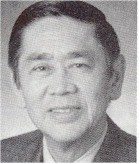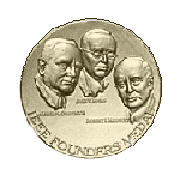Eugene Wong: Difference between revisions
No edit summary |
No edit summary |
||
| Line 2: | Line 2: | ||
<p>[[Image:Wong.jpg|thumb|right]] </p> | <p>[[Image:Wong.jpg|thumb|right]] </p> | ||
[[Image:FoundersMedal.gif|thumb|right|IEEE Founders Medal]]Dr. Wong was awarded the 2005 [[IEEE Awards|Founders Medal]] | |||
<p>Dr. Eugene Wong is known for the extraordinary breadth of his accomplishments in scientific research, academia,the business world and government service. As a researcher, Dr.Wong set new directions in the theory of stochastic processes and database technology. Working with [[Bruce Hajek]], he developed the theory that provides the statistical foundation for processing images and other multi-dimensional data.He also invented 'dynamic re-materialization,' a method that focuses on the distribution of data during query processing. </p> | <p>Dr. Eugene Wong is known for the extraordinary breadth of his accomplishments in scientific research, academia,the business world and government service. As a researcher, Dr.Wong set new directions in the theory of stochastic processes and database technology. Working with [[Bruce Hajek]], he developed the theory that provides the statistical foundation for processing images and other multi-dimensional data.He also invented 'dynamic re-materialization,' a method that focuses on the distribution of data during query processing. </p> | ||
| Line 11: | Line 13: | ||
<p>In 1990,he was recruited by the U.S. White House to be associate director of the Office of Science and Technology Policy, Executive Office of the President, where he coordinated the effort leading to the Presidential Initiative on High Performance Computing and Communications (HPCC) and the High Performance Computing Act of 1991. In addition,from 1998 to 2000 he served as assistant director of the [[Oral-History:National Science Foundation (NSF)|National Science Foundation]] and Head of the Engineering Directorate, where he reshaped NSF programs in engineering. </p> | <p>In 1990,he was recruited by the U.S. White House to be associate director of the Office of Science and Technology Policy, Executive Office of the President, where he coordinated the effort leading to the Presidential Initiative on High Performance Computing and Communications (HPCC) and the High Performance Computing Act of 1991. In addition,from 1998 to 2000 he served as assistant director of the [[Oral-History:National Science Foundation (NSF)|National Science Foundation]] and Head of the Engineering Directorate, where he reshaped NSF programs in engineering. </p> | ||
<p> | <p>"For leadership in national and international engineering research and technology policy, for pioneering contributions in relational databases." </p> | ||
[[Category:Computers and information processing|Wong]] [[Category:Engineering education|Wong]] | [[Category:Computers and information processing|Wong]] [[Category:Engineering education|Wong]] | ||
Revision as of 20:14, 12 January 2012
Biography
Dr. Wong was awarded the 2005 Founders Medal
Dr. Eugene Wong is known for the extraordinary breadth of his accomplishments in scientific research, academia,the business world and government service. As a researcher, Dr.Wong set new directions in the theory of stochastic processes and database technology. Working with Bruce Hajek, he developed the theory that provides the statistical foundation for processing images and other multi-dimensional data.He also invented 'dynamic re-materialization,' a method that focuses on the distribution of data during query processing.
As chairman of the electrical engineering and computer sciences department at the University of California in Berkeley, he led it to become not only Berkeley's largest academic department, but also one of the most globally respected. He also served for two years as vice president of research at Hong Kong University of Science and Technology, where he developed successful and innovative programs in technology transfer and commercialization.
Also a businessman, Dr.Wong was a co-founder of INGRES Corporation, a major database software company and technology leader. He subsequently was chief executive officer of SuperNet,Ltd., a pioneering Hong Kong Internet service provider, and of Versata, Inc., an Oakland, California based publicly traded software company.
In 1990,he was recruited by the U.S. White House to be associate director of the Office of Science and Technology Policy, Executive Office of the President, where he coordinated the effort leading to the Presidential Initiative on High Performance Computing and Communications (HPCC) and the High Performance Computing Act of 1991. In addition,from 1998 to 2000 he served as assistant director of the National Science Foundation and Head of the Engineering Directorate, where he reshaped NSF programs in engineering.
"For leadership in national and international engineering research and technology policy, for pioneering contributions in relational databases."

